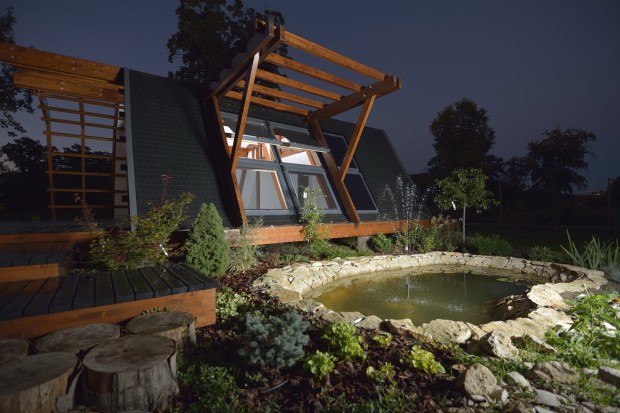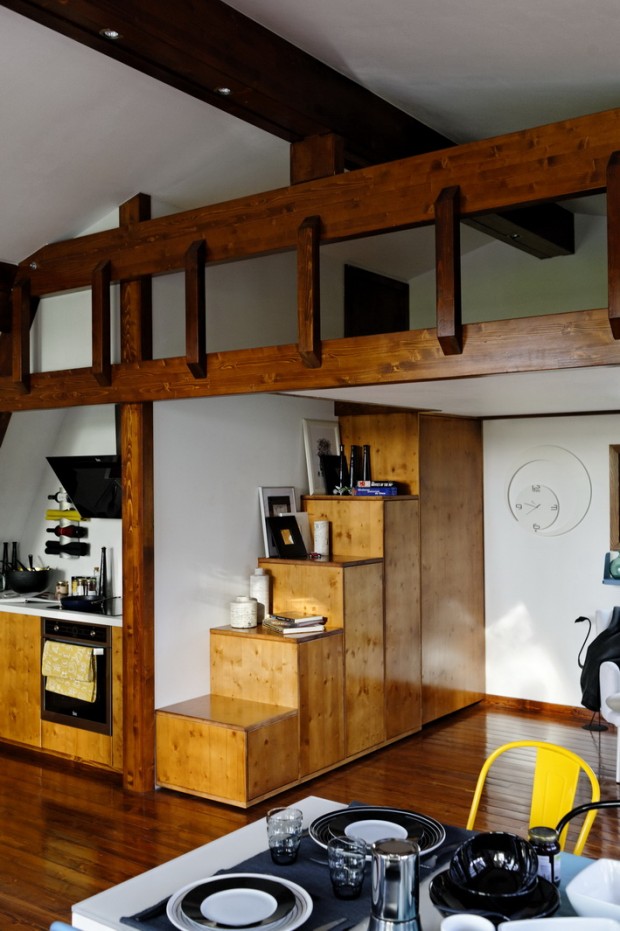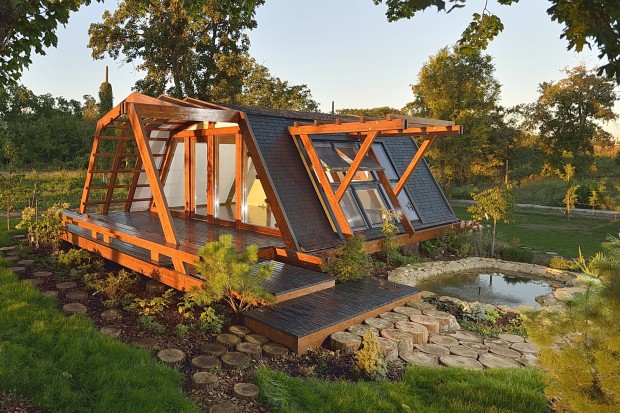Ever had the desire to go off the grid? No, I’m not talking about turning off your electronic gadgets and disappearing into the world. I’m talking about building a house that uses renewable energy and doesn’t consume traditional power. The idea has probably crossed all of our minds at least once. Personally I could never live without my gadgets (no, really, I make a living with them), but living in a totally green house would certainly be cool.
The Justin Capra Foundation for Sustainable Technologies and Inventions, or FITs, has just unveiled a line line of off-the-grid consumer homes labeled Soleta zeroEnergy. Like most other products, there are actually different variations of the homes in a wide range of sizes in order to accommodate a broad range of family sizes.
The homes combine elements of rustic modular design with energy saving and power producing technologies, to essentially allow the inhabitants to live off the land – so to speak. The smallest Soleta zeroEnergy home includes just 516 square feet of floor space (48 square-meters), with a fully usable attic, of course (not included in previous size estimate). Whereas the largest zeroEnergy home has a floor space of about 1,077 square feet (100 square meters), that’s meant to be suitable for a family of five. The houses also make use of some pretty unique storage options to save internal space.
Needless to say, and the images are testament to this, but these houses look pretty stylish. Of course, you’re not going to be able to deploy them in a deed restricted community, but I’m sure someone looking to go off-the-grid probably wouldn’t be moving into a community like that anyway.
Reportedly, the houses are comprised of recycled materials (up to 97 percent), with wood being the main structural material. Also, because they’re designed to be modular you can always expand space by adding additional sections like a standard modular home.
While they are designed to rely solely on renewable energy sources, consumers can use modern resources if necessary, like running water, standard electricity and more. The latter support is really for those consumers out there who are too chicken to dive headfirst into an off-the-grid lifestyle (don’t worry I’m one of those chickens).
During production the homes can actually be designed to include a geothermal water heating system, wind power, solar power and natural water collection techniques. Low-e windows and LED lighting are used throughout the homes to ensure temperatures remain cool, along with a pellet-burning stove. Interestingly enough, the entire home is monitored by a computer system that’s supposed to help keep everything in proper working order. So, it’s an off-the-grid home that uses a computer system, huh?
The homes can be built on wooden foundations or concrete, depending on your choice of preference. Obviously, the concrete foundation is much cheaper in terms of overall cost.
The smallest zeroEnergy home, named the One, starts at about $32,000 (€25,000). The largest home in the zeroEnergy line labeled the Two, is about $75,000 (€57,000). Of course, since these are modular homes those are just the estimated starting costs, should you decide to add more features into the house the price will be higher. The good news is that each house comes with a ten-year warranty, although I’m sure there are limitations.
If you want to check out the homes you’ll have to travel to Bucharest, Romania where a show house is currently deployed. For reference, it’s located just outside the US Embassy over there.
These houses are pretty cool, but I don’t know if I’d ever want one. What do you think? Let us know in the comments below and be sure to check out the via link below to visit the gallery for more screenshots of the charming zeroEnergy homes!

 Email article
Email article






